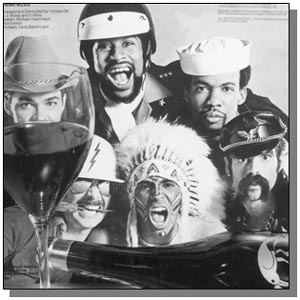![[MetroActive Dining]](/gifs/dining468.gif)
![[MetroActive Dining]](/gifs/dining468.gif)
[ Dining Index | Sonoma County Independent | MetroActive Central | Archives ]
Branching Out
It Takes a Village, People: All stripes, credos, beliefs, and mores add to the mix--even when one is not drinking.
Local wines are nothing if not diverse
By Bob Johnson
CELEBRATE DIVERSITY" is more than a bumper sticker. This wake-up call to American society stresses that the differences among the myriad cultures that reside within our borders must be accepted and embraced if our country is to survive and thrive in the new millennium.
And so it is with wine. For several years, chardonnay was the chic beverage of choice at meet-market happy hours. So ubiquitous was it that eventually an attitude was spawned that weary wine drinkers referred to simply as "ABC": Anything But Chardonnay.
American society's never-ending search for something new led to the current obsession with merlot. Rest assured that this phenomenon, too, is cyclical, leading to what likely will come to be known as "ABM." It promises to be an explosive situation as vintners debate the identity of the industry's next great cash cow.
When I first started getting serious about wine, the great PR machine that drives the Napa Valley lured me to Hwy. 29, the Silverado Trail, and the side roads that connect those two primary byways. But as I visited more tasting rooms, talked to more winemakers, took more wine classes, and developed my palate, I became much more enamored with the wineries and wines of Sonoma County--for our diversity.
Although numerous varietal bottlings are now produced there, Napa remains basically a two-wine valley: chardonnay and cabernet sauvignon. Napa Valley vintners produce world-class examples of those wines--and command world-class prices for them. Sonoma County winemakers, on the other hand, are making a much larger variety of wines that are exciting for the taste buds and easy on the wallet.
This should come as no surprise to those who know their local history. This county has been home to Native Americans, Russian seal hunters, and Mexican vaqueros. And that diversity lives on today in the bottles of Sonoma County wineries.
Sure, excellent chardonnays and cabernets are made here. But to concentrate solely on those varietals would mean missing out on the crisp, complex sauvignon blancs from Matanzas Creek; the zesty zinfandels from De Loach; the spicy shiraz bottlings from Geyser Peak; the clean, refreshing chenin blancs from Dry Creek; and the delicate, delectable Gewürztraminers from Alderbrook.
Here are four recently released wines that clearly illustrate how Sonoma County vintners resist conformity. Wines are rated on a scale of one to four corks: one cork, drinkable; two corks, worth a try; three corks, excellent; and four corks, sell the farm, if necessary, to get your hands on it.
Ravenswood 1995 Icon
Field Stone 1993 Staten Reserve Petite Sirah
Pezzi King 1995 Dry Creek Valley Zinfandel
Ramsay 1996 California Pinot Noir
[ Sonoma County Independent | MetroActive Central | Archives ]
Copyright © Metro Publishing Inc. Maintained by Boulevards New Media.

Michael Amsler
THIS BLEND of Rhône varietals (syrah, mourvedre, and grenache) has ripe, dark fruit aromas and matching flavors, complemented by a deft touch of oak. Winemaker Joel Peterson has built his reputation on zinfandel. Now that Icon is being made in sufficient quantities to generate mass appeal, his zins may have some competition. Rating: 3.5 corks.
PETITE SIRAH can be a problematic wine, often possessing ferocious tannins that overwhelm the fruit flavors. That's why it's often used as a blending partner with zinfandel, cabernet sauvignon, and pinot noir, rather than bottled as a varietal. No tannin trouble here, though. This wine is loaded with berry flavors and an alluring dollop of spice, making it an ideal match for hearty fall fare. Rating: 3 corks.
THE DRY CREEK VALLEY is known for producing lip-smacking zinfandels, and this zin fits that description. Cinnamon, clove, and allspice aromas jump out of the glass, while black pepper dominates the flavor, complemented by bright red fruit. This is an exotic, opulent wine that demands a second glass . . . and a third, if someone else is driving. Rating: 4 corks.
USUALLY, a "California" designation on a bottle is reason enough to move on down the aisle. It means that the grapes were sourced from at least two regions, neither of which represented a high enough percentage of the blend to qualify for inclusion on the label: When I see "California" on a label, I automatically think "Fresno." But here's a bottling that shows this kind of thinking is unfair at best and stupid at worst. Winemaker Kent Rasmussen has fashioned an exceptional wine by blending grapes from Sonoma, Napa, and Monterey counties--how's that for diversity? The result is pure pinot, with candied fruit, black cherry, and raspberry flavors. Seen for under $10, this wine is not only a stylish success, but a rare bargain in an overpriced wine market. Rating: 3 corks.
From the Oct. 9-15, 1997 issue of the Sonoma County Independent.